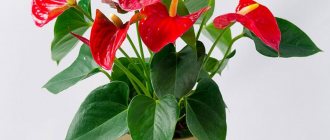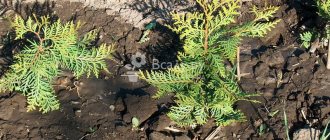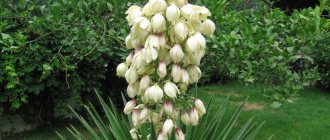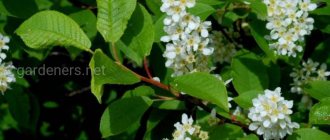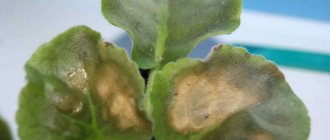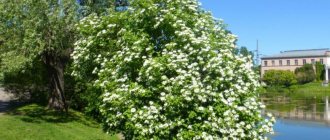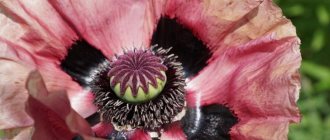Watering with cold or hard water is also detrimental to the bush. And in order not to look for how to urgently revive anthurium at home, water for irrigation should not only be left standing for several days, but also frozen. The use of hard water is manifested by the formation of black tips of the leaves.
Important! Deformed and yellow parts of the plant are cut off with a sharp knife, after wiping it with alcohol. For large cuts, the surgical sites are sprinkled with charcoal.
What to do in hopeless situations
How to revive anthurium without leaves at home? It is worth remembering that the plant is an epiphyte and also reproduces by aerial roots. If the plant has dropped its leaves, it should be removed from the pot and carefully examined for infections and pests. After treatment with special chemicals (fungicides or insecticides), if there is at least one living “bump” - an aerial root - you can hope for salvation.
Resuscitation measures include inspection of the root system. The gardener should remember that the root system of anthurium is very fragile and therefore requires careful behavior. Only the white, fleshy roots are alive. Black and yellow elements are no longer able to provide the above-ground part of the plant with nutrition. If there are living roots, it is worth trying to revive the bush by replanting it in fresh soil and creating the right conditions.
Resuscitation or rejuvenation is carried out in 2 ways:
- The actions are aimed at activating aerial roots, which actively develop in a warm and humid environment. Anthurium has no roots, what to do is to wrap the sprout with damp sphagnum moss in the place where the tubercles of undeveloped aerial roots are visible and place it in a humid environment. Full roots grow within 2-3 weeks. Cut off a strong sprout from the mother plant and plant it in a separate pot.
Root the sprout directly in the pot. The above-ground part is cut off and placed in a humid environment. To create it, drainage and nutrient soil are poured into the pot, and a ball of sphagnum moss is placed. As the roots develop, they reach nutritious soil and the plant gains strength and endurance. If the sprout is elongated, it can be divided into segments. The appearance of young leaves indicates that the plant has taken root.
In order to see the condition of the roots, they should be soaked in warm water and washed carefully. All damaged roots and rotten specimens are cut off, and the cut areas are sprinkled with activated carbon. Living growth points are visible to the naked eye. After pruning, the roots are transplanted into fresh soil.
Important! Rooting anthurium with sphagnum moss gives high positive results, since this natural material not only perfectly retains moisture, but also provides a bactericidal effect.
Anthurium leaves turn black
Anthurium leaves may turn black and dry out due to improper nutrition of the root system. A mourning border or black spots appear when the rules of replanting and fertilizing are violated. In a similar way, a houseplant reacts to an excess of calcium in the soil.
Transplanting an ornamental flowering plant into a special substrate for epiphytes will help correct the situation. Orchid planting mixture is perfect for growing anthurium at home. Timely replanting of anthurium ensures adequate nutrition of the root system.
Experienced gardeners always recommend preparing a less concentrated solution than indicated on the package.
How to revive a dying anthurium?
If the plant comes to you in very poor condition, do not rush to get rid of it. Perhaps the anthurium can still be saved.
A small stunted anthurium came to me in an excessively large pot and with a lump of earth, which had long ago turned into a hard stone. I soaked the dried earthen lump in water for a long time. When I finally managed to do this, I was horrified to discover that there were no roots there at all: they were dry and fell off when touched. Having torn off all the dried leaves and cleared the plant of dead “crusts”, I discovered a living core. I decided not to root it in water.
I mixed the soil for seedlings with washed sand, added wood ash and deepened the plant into the resulting soil mixture, without covering it with a jar on top, for fear of causing rot. I just put it in partial shade. Regularly sprayed with Kendal solution (biostimulator).
For almost six months the plant showed no signs of life, but it did not die either. And I decided to take it out of the ground. I pulled and it didn’t budge. As a result, I found three thick white roots, one of which broke off when I pulled it out of the ground. Since then, I have tried to be very careful when transplanting. Having carefully cut off the broken root, sprinkled it with ash and transplanted the plant into fresh soil. I took a ready-made substrate for ornamental flowering plants, added a little coniferous peat - the result was a light, fertile mixture. A layer of expanded clay was placed on the bottom of the pot.
Watering and replanting
Anthurium began to grow with incredible speed. Three shoots appeared at once from above, releasing new roots from the side, six dark green glossy leaves opened in all their splendor. warm showers weekly while he was without flowers. But when flowers appear, I do it carefully. Before starting water procedures, be sure to put a plastic bag on the inflorescence, since when water gets on the flower, unsightly black marks remain and it quickly fades. You can not spray the anthurium, but wipe the leaves with a damp sponge on both sides.
A year later, my ward turned into an excellent specimen of Scherzer's anthurium (A. scherzerianum), which produced 2 scarlet flowers with charming curled pink tails. I replant the anthurium every 2 years in the spring into the soil mixture that I wrote about above. During transplantation, strongly overgrown specimens can be divided or the lateral processes can be separated.
Pests
Unfortunately, mealybugs and scale insects . It is very convenient to remove pests with an old toothbrush, and then wash the plant with calendula infusion: pour half a glass of dry calendula with a glass of boiling water, leave overnight. Then I wet the cotton swab well and wipe all the affected areas. I continue this treatment until the pests disappear. Using an alcohol solution to remove insects will also be effective. However, this method helps as long as the number of parasites is small. If there are a lot of pests, before treating with calendula I use a solution of liquid soap (for washing dishes). I try not to use chemicals.
Parasitic diseases: anthurium pests
Parasitic diseases should be included in a separate group of diseases. Oddly enough, even those plants that are properly cared for are susceptible to these diseases. When attacked by pests, leaves, flowers, root systems and green shoots are affected. The main pests of anthurium include:
- aphids;
- thrips;
- spider mite;
- scale insect.
Aphids are a malicious pest; it is advisable to fight them before the insects multiply. When a plant is massively infested with aphids, it becomes increasingly difficult to cure the flower. To combat, you can use chemicals or use a mechanical method of control: hang sticky tapes to catch flies near the plant itself.
The flower is suffering from a thrips invasion. To understand that this particular pest has infested the plant, you need to carefully examine the underside of the leaves. Black dots indicate its presence. The insect is active in spring and summer.
Not only adult thrips are dangerous, but also their larvae. Feeding on the sap of the plant, they gradually lead to its death. Thrips can be controlled using pesticides. It is better to buy in specialized stores, paying attention to the expiration date of the drug.
Insects appear on plants that are not properly cared for. To minimize errors, you need to carefully monitor the anthurium, water it in a timely manner, feed it and, of course, provide the plant with a flow of fresh air by ventilating the room daily.
If an anthurium is damaged by a scale insect, you need to prepare for the fact that the fight against it will be lengthy. And it depends only on the persistence of the owner whether the result will be positive or negative. At the early stage of pest appearance, it is unlikely that you will be able to see them with the naked eye. Bugs have a durable shell, so when treated with chemicals, good results are not always obtained.
Before spraying the plant with insecticides, you need to soap the sponge with laundry soap and wipe the plant itself, leaving the soap foam on the flower for half an hour. Then you need to wash the flower in the shower, let it dry and only then carry out the treatment.
You need to spray the plant 3 times with an interval of 7 days. If this condition is not met, scale insects will appear again, since some of the adult individuals are in the soil.
Attention! When treating anthurium against scale insects, you need to spill the soil with a weak solution of the prepared preparation, or even better, replace the old soil with new one.
Spider mites are no less dangerous pests. Thanks to its vital activity, the leaves of the plant begin to turn yellow, gradually curl and fall off. You can tell that there is a spider mite infestation by looking at the thin web that will be located on the back of the leaf.
The pest can be controlled with folk remedies. First you need to wash the plant in the shower and free it from cobwebs. Then you need to wipe the surface of the leaves, the pot itself, and the window sill on which the anthurium stood with a sponge and laundry soap.
Signs of the need for flower rejuvenation
If an anthurium disappears, most likely it’s time to rejuvenate it.
The following signs indicate this:
- an elongated stump with leaves remained from the plant;
- there are fewer leaves and more side stems;
- the flowers stopped blooming;
- the buds became smaller in size.
the trunk was exposed at the bottom;
Depending on the conditions, the need for rejuvenation occurs 5–10 years after purchase.
The condition of the plant is adversely affected by the owner’s mistakes:
- frequent drafts;
- daylight hours are shorter than 12 hours;
- exposure to direct sunlight;
- air temperature below +17°C and above +25°C;
- humidity below 80%;
- waterlogging of the soil and stagnation of water;
- complete drying of the substrate;
- lack of fertilizing;
- watering with hard water;
- neglect of transplants;
- untimely treatment of diseases.
Signs of improper flower maintenance
Anthurium suffers from improper care and immediately signals this to the owner. By external changes you can determine what mistake was made.
| Sign | Error in care |
| The leaves are curling | Little light, dry air |
| Black spots on leaves | Stagnation of water in the substrate |
| Yellow leaf tips | Drafts, low temperature |
| Black tips of leaves | Watering with hard and cold water |
Diagnosis of diseases of “male happiness”
All problems of growing anthurium can be divided into leaf diseases, peduncle diseases, root diseases, and the general unsatisfactory condition of anthurium, which are caused by the presence of pests, infectious diseases, or simply errors in care.
Making a correct diagnosis and starting timely treatment is a difficult task for a gardener, since the symptoms of various diseases are often similar to the consequences of improper care.
It is important to know that anthurium kept in a dry room most often suffers from spider mites; the leaves lose their elasticity from lack of moisture, turn yellow and curl, but these plants are very rarely affected by fungal and bacterial diseases.
In humid conditions without ventilation, plants more often suffer from soil overflow, and as a result, they suffer from infectious diseases.
Having assessed the condition of your premises and the care provided, you can more or less accurately decide how to help the anthurium.
Table - diagnosis of plant diseases and pests
- leaves dry out and turn yellow around the edges
- leaves curl and turn black
- the plant becomes lethargic, the leaves lose their elasticity
- drying of unopened buds, aggravated by infrequent watering
- leaves curl into a tube and become deformed
- the leaf blade becomes covered with whitish spots and dries out
- yellowing of leaves
- petiole pulling
- lack of flowering
- leaves dry out, forming round holes
- root rotting
- yellowing and drying of leaves
- the appearance of black dots on leaf blades
- death of roots from rot
- pimples on leaves, peduncles
- "crying" leaves
- the whole flower withers
- leaves fade and become smaller
- new flowers are growing smaller
- Anthurium stops blooming
- greening of fading bedspreads
- red young leaves
- red veins on leaves
- thickening of stems with age
- gradual death of lower leaves
- overgrowth with brown scales - remnants of old leaves
- cobs disappear (flowering stops)
- plant growth stops
- no new leaves appear
- new leaves grow slowly
- the anthurium falls apart (due to water getting into the growing point)
Infectious diseases of anthurium in the photo
How to save anthurium from death at home
To save the anthurium, it needs to be rejuvenated.
Rejuvenation is carried out in two ways:
- Activation of aerial roots . This plant is epiphytic and has aerial roots. Wrap them in damp sphagnum moss and leave them in a warm place. Soon the roots will sprout, and then they can be cut from the stem. There is no need to remove the moss. Aerial roots now perform the functions of a seedling. They can be planted in a pot and wait for further growth.
- Rooting the top . Cut off the top of the plant along with a few growing points. Place it in warm water and keep it in a room with a temperature of at least +21°C. Soon the plant will take root, after which it can be planted in a pot.
Transfer to another container
Transplantation can also help the plant.
Do it this way:
- Place drainage mixture at the bottom of the new container.
- Fill the container one third with pre-prepared substrate.
- Carefully remove the plant from the old pot.
- Inspect the roots for rot. Cut off the rotting part, treat the cut with crushed activated carbon.
- Place the flower in a new container and straighten the roots.
- Pour the rest of the substrate into the pot.
The type of pot is important for replanting. It is better to choose a transparent plastic container - this way the grower will be able to monitor the condition of the root system. The size should be comparable to the size of the roots. The root system should fit completely into the container, but still have room for the substrate.
Video: Anthurim rejuvenation
Choosing soil for plant rooting
Soil plays an important role for a flower. In the right substrate, the plant will quickly take root and grow.
- loose;
- slightly acidic;
- ventilated;
- coarse fiber.
The substrate can be prepared according to several recipes.
For the first recipe you need to mix:
- 2 parts of turf;
- 2 parts peat crumbs;
- 1 part crushed moss.
The second way to prepare the substrate is to combine in equal parts:
- leaf soil;
- sand;
- coal;
- pine bark;
- peat crumbs.
To save time, many gardeners buy ready-made soil mixtures. Manufacturers offer a large selection of substrates that are ideal for demanding flowers.
Features of care
Anthurium is a demanding plant.
All care procedures are important for him, including watering, fertilizing, pruning and replanting:
- Watering . Moisten the soil when the top layer of the substrate dries out. Do not let the soil mixture dry out, but do not flood the roots. Pay attention to the air temperature: the colder the room, the less often you need to water the flower.
- Fertilizer . Apply liquid fertilizer every 2-3 weeks from March to August. The best choice is complex mineral fertilizers. The flower tolerates organic matter well, but flower growers advise using preparations based on nutrient salts.
- Trimming . After flowering ends, it is better to trim the buds. Pruning is carried out only with a sharp knife, cutting off the flower at the very base. It is advisable to disinfect the cut by rubbing it with ash.
- Transplant . The roots of the flower grow larger with age. They become cramped in an old pot, so the plant needs to be replanted regularly. Young anthuriums grow faster, so they should be replanted annually. Older plants do not develop as intensively - they are replanted every 2-3 years. The procedure is best carried out in the spring.
Anthurium leaves turn yellow
Anthurium leaves turn yellow and lose their attractiveness for various reasons. A yellowed leaf quickly withers and dries up. The plant quickly loses its above-ground part if the cause of the problem is not eliminated in time.
The yellowing of indoor epiphyte leaves is caused by:
- Root system rotting.
- Violation of lighting conditions.
- The flowerpot is too small.
- Damage by flower pests.
- Swamping of the substrate.
- Watering with unprepared water.
- Chlorine content in soil.
Yellow spots may appear on several leaves at once. You should not aggravate the problem if only one leaf turns yellow. Epiphyte roots are not adapted to waterlogging of the soil. Excessive enthusiasm and watering with unprepared water lead to damage to the root system by putrefactive bacteria.
The conditions are:
- Initially, watering is reduced to allow the substrate to dry completely. It is important not to let the soil dry out. The plant is replanted if moderate watering does not lead to the desired effect. You should carefully inspect the horse system and remove rotten parts. A half-hour disinfectant bath of a weak solution of potassium manganese has a beneficial effect. All sections are treated with crushed coal or brilliant green (pharmaceutical green). The plant is planted in a new flowerpot, covering the bottom with a thick layer of drainage mixture. Watering is carried out moderately, avoiding flooding.
- Under natural conditions, anthurium grows in the diffuse shade of tropical forests. Therefore, it should be protected from scorching sunlight. A houseplant must be shaded when kept on the windowsill of a south-facing window. Yellow epiphyte leaves in winter indicate a lack of lighting. Anthurium is placed in a more illuminated place or additional lighting is provided with UV lamps.
- The root system of the epiphyte very quickly masters the substrate and fills the entire space of the flowerpot. Often the roots rise above the soil surface or grow out through drainage holes. The plant can grow safely in such conditions for some time. The yellow color of the leaves indicates a detrimental level of stress and the need for emergency transplantation into a larger pot.
- It is very important to water the anthurium with settled boiled water at room temperature. Chlorinated water from city water supplies is absolutely unacceptable for watering epiphytes. Chlorine and heavy metal salts accumulate in the substrate and lead to chlorosis. The specimen should be immediately transplanted into new soil. After transplantation, moistening and watering are carried out exclusively with prepared water.
Useful tips for caring for anthurium
Anthurium is a very demanding plant. When growing it, it is not enough to follow basic agricultural techniques. It is also important to take into account the nuances of the flower.
When caring, pay attention to the recommendations of experienced flower growers:
- add bone meal to any type of substrate for better ventilation;
- use expanded clay, sand or dried cuttings as drainage;
- after purchasing a flower, be sure to replant it in a suitable pot and soil - store-bought substrate is usually not suitable for it;
- When replanting, it is good to plant children that grow on the trunk as it develops.
Anthurium is a fastidious plant that requires proper care. If you do not monitor the growing conditions, the flower may die. However, with timely rejuvenation, it will be saved and in the future will continue to delight the owner with bright flowering.
LiveInternetLiveInternet
–Categories
- ORTHODOXY (14)
- HANDMADE (14)
- beads (1)
- BUSINESS, FINANCE (0)
- IN THE WORLD OF ANIMALS (0)
- EVERYTHING FOR CHILDREN (2)
- EMBROIDERY (1)
- KNITTING (359)
- compilations (333)
- crochet (8)
- for women (4)
- for men (2)
- master classes (2)
- patterns (2)
- children (1)
- FOR THE COTTAGE AND GARDEN (206)
- BEAUTY and HEALTH (90)
- diets, weight loss (27)
- good for health (23)
- face masks (1)
- traditional medicine (35)
- hair care (5)
- foot care (1)
- COOKING (4030)
- collections of recipes (499)
- pies, pies (255)
- poultry dishes (232)
- for dessert (221)
- baked goods (130)
- pancakes, pancakes (115)
- main courses (113)
- minced meat (107)
- jam (97)
- sauces, dressings, marinades (78)
- vegetable dishes (73)
- cottage cheese dishes (59)
- for breakfast (58)
- from offal (57)
- for Easter (55)
- Lenten dishes (47)
- dough (45)
- side dish (42)
- pasta and cereals (31)
- pizza (29)
- culinary tricks (25)
- recipes with lavash (24)
- egg dishes (19)
- sausages, dishes with sausages (14)
- fast food (10)
- for multicooker (8)
- cheeses (2)
- fish dishes (155)
- dishes with mushrooms (44)
- winter preparations (222)
- snacks (235)
- casseroles (74)
- potato dishes (125)
- porridge (28)
- shrimp, squid, seafood (23)
- meat dishes (156)
- drinks (100)
- food decoration (1)
- salads (231)
- sweet pastries (38)
- soups (196)
- cakes (107)
- HOLIDAYS (34)
- New Year (12)
- Christmas (9)
- Easter (7)
- Valentine's Day (2)
- February 23 (1)
- March 8 (1)
- MISCELLANEOUS UTILITIES (18)
- SPORTS (2)
- COMFORT IN THE HOUSE (180)
- indoor plants (176)
- SEWING (1)
- ESOTERICA, MAGIC, ASTROLOGY (12)
- THIS IS INTERESTING (6)
–Tags
-Statistics
Reanimating a dying anthurium plant
Monday, July 23, 2022 15:53 + to quote book
A beautiful, long-blooming anthurium takes pride of place in the apartment. Bright flowers and beautiful arrow-shaped leaves of the anthurium plant are the hallmark of a home where there is enough love and care for all its inhabitants. A demanding flower loses its decorative effect at the slightest deviation from the maintenance norm. Flowers become especially capricious over the years, losing foliage.
Signs of the need for flower rejuvenation
- the high anthurium stem was exposed from below;
- the flowers are crushed or the plant does not bloom;
- the leaves become smaller, many side shoots appear;
- The trunk stretches and the leaves fall off.
In any case, if a flower has lost its decorative value, and it is a pity to part with it, it should be revived. But first, carry out an analysis and determine what is missing in agricultural technology, so that in the future the plant will delight you with its appearance for a long time.
Basic care requirements:
- year-round exposure to light without direct sunlight, providing at least 12 hours of daylight;
- exclusion of any kind of drafts;
- creating a comfortable temperature of the surrounding air and ground;
- creating a zone of high humidity around the flower by any kind of evaporation and spraying;
- soil that meets the requirements and watering without stagnation of water in the pot;
- regular watering with settled soft water and fertilizing the plant;
- timely transplantation and propagation;
- control of diseases and pests.
If a set of measures is completed, then the anthurium will not need rejuvenation for a long time.
Flower diseases, treatment and prevention
Most often, anthurium diseases appear due to improper care, among which the largest place is occupied by overwatering and hypothermia, and as a consequence of this, rotting of the root system.
Infectious diseases pose a great danger to the plant: anthracnose, fusarium, septoria, as a result of which the plant often dies even after treatment.
It is easier to deal with rust on leaves and various root rots. And almost all plants recover and improve their appearance if the cause of the disease was improper care.
Treatment of infectious diseases
Many infectious diseases lead to the death of the plant, but you still need to try to save the plant.
First of all, we isolate the damaged plant from the rest, examine it and make a preliminary diagnosis.
When working with fungicides, be sure to use personal protective equipment and do not eat or drink.
Fusarium wilt is an infectious disease in which the mycelium of the fungus penetrates the living tissue of the plant and clogs vital vessels. Root rot appears, spreading into the trunk. Leaves that do not receive nutrition quickly wither and the plant dies. The best way to fight is prevention. When planting, several grains of Trichodermin are added to the soil mixture to maintain the high vitality of the plant. You can try to save a diseased anthurium by cutting off the living upper part and rooting it, after soaking it in a solution of Fundazol for about 30 minutes.
Root rot most often occurs when the plant is constantly overwatered. Treatment is trimming the rotten parts of the roots and treating with Fitosporin-M or Maxim, transplanting into a new substrate and preferably a new pot.
Rust is a fungal disease that appears on all parts of anthurium, but most often on the leaves. For the purpose of prevention, at low temperatures and high air humidity, treatment can be carried out with Fitosporin, and in case of an already existing disease - with Topaz, Ordan.
Powdery mildew appears when the temperature drops sharply and humidity increases. Preventive measures - do not spray anthurium in cool weather (winter maintenance). Treatment of powdery mildew - place the pot in a warm, dry place, spray with Topaz or Acrobat.
Anthracnose appears due to high humidity, which is exactly what anthurium loves. The causative agents of the disease - fungi of the genus Colletotrichum and Kabatiella - may not manifest themselves for a long time, but when favorable conditions arise for them, they begin to infect the plant. Usually the first symptoms appear on the leaves in the form of spots, which become more and more numerous. The affected leaf shrinks, becomes thinner and becomes like tissue paper. Then anthracnose attacks the stems and almost the entire plant dries up on the root. Treatment of anthracnose should be started as early as possible. The first step is to remove all damaged leaves and destroy them. The soil is changed to a new one, and the roots of the anthurium are disinfected. The plant is quarantined with a decrease in air humidity and a reduction in watering. It is strictly forbidden to spray, since fungal spores are carried by water droplets. If the plant is very sick, then use fungicides: Baktofit, Fitosporin, Fundazol, Ridamin Gold, Silk. Spray the plant 2-3 times every 10-14 days.
Signs of improper flower maintenance
If the leaves begin to curl into a tube, reducing the surface area, this is already a signal of a lack or excess of light and dry air. If black spots appear on the leaves, the plant is watered abundantly and stagnant zones appear in the substrate. The tips of the leaves begin to turn yellow, you need to increase the air temperature and eliminate the draft.
Yellow leaves and stems of dried flowers should be cut off with scissors, after disinfecting them in order to stop damage to the plant.
Pest infestation
The plant may also be affected by harmful insect parasites. Next, we will get acquainted with the most common pests and find out how to get rid of them.
Aphid
This miniature parasite, despite its tiny size, causes considerable harm. Aphids settle at the bottom of the leaf and suck out the juices of the plant. A colony of insects multiplies at a rapid pace.
What to do
Since pests multiply very quickly, you need to get rid of them quickly. Fortunately, removing aphids is not difficult: you just need to buy a suitable insecticide and treat the plant. A day after treatment, the leaves should be washed with water to wash off dead and still living insects. And such washing of the leaves will protect against chemical burns.
Shchitovka
This pest is more dangerous than aphids. The scale insect settles on the leaves and stems of anthurium and feeds on its juices. The insect has good camouflage and it is quite difficult to notice parasites.
What to do
When the scale insects multiply, the insects can be seen with the naked eye: treatment should then be undertaken urgently. The flower must be isolated from other plants and washed with water.
Then an insecticidal treatment is carried out, a day after which the flower should be washed again. There should be two treatments in total. If the scale insect has not yet had time to reproduce, you can try to deal with it using a regular soap solution.
Mealybug
This pest is the easiest to deal with, since it can be noticed almost immediately. The scale insect covers the leaves with a whitish coating, which immediately catches the eye. However, if rescue measures are not taken quickly, the scale insect may even destroy the anthurium.
The flower is dying, how to save anthurium
How to rejuvenate anthurium
- activating aerial roots;
- restoring the functionality of the root system.
Aerial roots will begin to develop in a warm and humid environment. Therefore, the best way is to place the plant in a warm place and create a belt of sphagnum moss around the growth points of future roots. In a constantly moist substrate, the plant will take root within a week or two. Then this part can be cut off with a sharp, disinfected knife, sprinkled with crushed charcoal or ground cinnamon.
Such a seedling can be immediately rooted in a pot by preparing the necessary composition of tropical soil. Sphagnum will not interfere with this; the roots will break through the pores of the moss and reach the nutrient mixture.
But if the plant is very elongated, then in this way you can root another piece of the plant stem. During root growth, the plant is not watered so as not to spoil the idle soil. It is only sprayed from above. As a harbinger of the salvation of the anthurium, a new leaf will soon appear on the seedling. After this, create conditions for the anthurium to develop as quickly as possible. The plant will not need feeding for the first 2-3 months, the soil is full, but there are still few roots.
Plant the plant according to all the rules and wait for the result. Such work may not be necessary if only the above-ground part of the anthurium dies, the roots remain viable. Then, after cutting off the top for separate rooting, the entire pot is left at rest in a warm and bright place. After some time, young shoots should appear, which can later be planted. This is also one of the ways to rejuvenate anthurium.
A significant role in the revival of plants is played by subsequent care for them, as for a loved one who is recovering from a serious illness.
Composition of soil for rooting anthurium
The recommendations for adding a large amount of sphagnum moss are correct; in addition to its moisture-retaining properties, it is also bactericidal. The danger is that if the soil has dried out on top, the moss near the root retains moisture, so there is a danger of overwatering the plant. Perlite and vermiculite hold moisture in the soil well, releasing it when necessary. Ground charcoal makes the substrate porous and creates centers for the formation of nutrition for the plant. Bark, necessarily, high peat, leaf substrate provide the necessary acidity. Sand is a source of silicic acid. A small amount of vermicompost fills the composition with beneficial microflora. All these substances are vital in the soil. It is good to use vermiculite as a top fill so that the moisture from the pot evaporates less.
Anthurium transplantation - video
Tips of anthurium leaves drying out
Often, gardeners are faced with the problem of the tips of anthurium leaves drying out, which causes reasonable concern. The tips of dried leaves lead to a rapid increase in the area of damage to the leaf blade and complete loss of the leaf. The plant may lose all its leaves if you do not respond promptly and make changes to agricultural practices.
Understanding the reasons why anthurium leaves dry out will allow for effective treatment. Dried tips of the leaves indicate insufficient air humidity in the room. Another equally common cause is poor aeration of the root system.
- Treatment for anthurium with dry leaf tips involves more frequent spraying. A pot with a houseplant is placed away from heating radiators. Place a container of water next to the pot to increase air humidity.
- Aeration of the root system depends on the composition of the soil and the material from which the flowerpot is made. Dense soil and insufficient drainage holes do not allow the roots to “breathe.” Anthurium should be transplanted into a clay pot. It is important to use a special composition for epiphytic plants for planting.
Signs of the need for flower rejuvenation
- the anthurium stem was exposed high up from below,
- the flowers are crushed or the plant does not bloom,
- leaves become smaller, many side shoots appear,
- The trunk stretches and the leaves fall off.
In any case, if a flower has lost its decorative value, and it is a pity to part with it, it should be revived. But first, carry out an analysis and determine what is missing in agricultural technology, so that in the future the plant will delight you with its appearance for a long time.
Basic care requirements:
- year-round exposure to light without direct sunlight, providing at least 12 hours of daylight,
- exclusion of any kind of drafts,
- creating a comfortable temperature of the surrounding air and ground,
- creating a zone of high humidity around the flower by any kind of evaporation and spraying,
- soil that meets the requirements and watering without stagnation of water in the pot,
- regular watering with settled soft water and fertilizing the plant,
- timely transplantation and reproduction,
- control of diseases and pests.
If a set of measures is completed, then the anthurium will not need rejuvenation for a long time.
Prevention measures
Proper care of green pets allows you to avoid a lot of problems. Timely and rational watering, sufficient fertilization, optimal lighting and air temperature will allow the flower to feel good and delight the owner with its beautiful blooms.
Unlike fungal diseases, which often appear due to improper care, parasitic diseases damage even well-cared for plants. To avoid many problems, you need to carefully monitor the anthurium and inspect the leaves for pests.
For preventive purposes, it is recommended to give the plant a shower from time to time and wash it with a solution of laundry soap. And if pests are nevertheless noticed, it is necessary to immediately begin to combat them.
Signs of improper flower maintenance
If the leaves begin to curl into a tube, reducing the surface area, this is already a signal of a lack or excess of light and dry air. If black spots appear on the leaves, the plant is watered abundantly and stagnant zones appear in the substrate. The tips of the leaves begin to turn yellow, you need to increase the air temperature and eliminate the draft.
Yellow leaves and stems of dried flowers should be cut off with scissors, after disinfecting them in order to stop damage to the plant.
Fungal diseases
As mentioned above, anthurium is a moisture-loving plant, so it has a high chance of becoming infected with mycoses. These are diseases caused by microscopic fungi that love moist environments.
Downy mildew (peronospora)
Whitish, yellowish spots appear on the leaves of anthurium, so familiar to gardeners. Cucumbers are often affected by this disease. The formation of gray spores can usually be observed on the reverse side of the leaf.
The source of this common disease is a microscopic fungus that is extremely sensitive to air humidity. The main condition for getting rid of this parasitic fungus is a decrease in air humidity in combination with the use of contact fungicidal preparations (Topaz, Acrobat).
Rust
The disease affects anthurium leaves. Chlorotic spots of a rusty hue appear on the outer surface, and active sporulation occurs on the lower surface. Just as in the case of downy mildew, the main method of combating and preventing leaf rust is maintaining optimal air humidity. For prevention, you can use biological fungicides, for example, Albit, Alirin, Fitosporin.
An anthurium leaf affected by rust must be treated with a fungicide.
Fusarium wilt
This type of mycosis inhibits the entire plant. The fungal nature of anthurium wilting is revealed by a pinkish-white coating that forms on the root collar. The causative agent of the disease is species of fungi of the genus Fusarium.
Unfortunately, Fusarium infection occurs in many ways, including through water and air. And the fungal spores are extremely tenacious and resistant to high temperatures and chemicals. Therefore, the main thing in the fight against fusarium is prevention, for example, adding the antifungal drug Glyokladin to the soil. Systemic fungicides Vitaros, Rovral, Fundazol have also proven themselves well in the fight against fusarium.
Fusarium wilt affects the entire plant
Septoria
This common fungal disease appears on the leaves as brown spots, sharply outlined by a yellow rim. Subsequently, the leaves wilt and the plant dies. The main treatment is treating anthurium with copper-containing fungicidal preparations (Bordeaux mixture, copper sulfate, Kuproxat).
Brown spots with a yellow rim on anthurium leaves are a sign of septoria
Anthracnose
Another disease of anthurium that is fungal in nature. The leaves begin to dry out and become thinner. Dry brown spots may appear from the edges or in the middle of the leaf blade. If urgent measures are not taken, the plant will dry out quite quickly and soon die.
With anthracnose, anthurium leaves begin to dry out at the edges
Treatment should be carried out using systemic fungicides (Fundazol, Acrobat, Ridomil Gold). It is also necessary to treat the soil containing fungal spores with fungicidal preparations. If the anthurium could not be saved, the remaining indoor plants should be protected. The fungal spores are extremely tenacious, so the vacated pot must be heated. If this is not possible, then you will have to get rid of such dishes.
Late blight
Anthurium is quite rarely affected by late blight; nightshade plants are still more often affected by this disease. Despite this, if you notice small purple-brown spots on the leaves, you need to take immediate action. Late blight develops very quickly and affects the root system, dooming the plant to rapid death.
The best option for controlling late blight is to use systemic fungicides. These include Fitosporin-M, Fundazol, Alirin-B, Previkur. In this case, you will definitely have to replace the soil, rinse the roots thoroughly under water, and heat treat the pot or replace it with a new one. The roots can also be treated with a weak solution of potassium permanganate.
How to rejuvenate anthurium
- activating aerial roots,
- restoring the functionality of the root system.
Aerial roots will begin to develop in a warm and humid environment. Therefore, the best way is to place the plant in a warm place and create a belt of sphagnum moss around the growth points of future roots. In a constantly moist substrate, the plant will take root within a week or two. Then this part can be cut off with a sharp, disinfected knife, sprinkled with crushed charcoal or ground cinnamon.
Such a seedling can be immediately rooted in a pot by preparing the necessary composition of tropical soil. Sphagnum will not interfere with this; the roots will break through the pores of the moss and reach the nutrient mixture.
But if the plant is very elongated, then in this way you can root another piece of the plant stem. During root growth, the plant is not watered so as not to spoil the idle soil. It is only sprayed from above. As a harbinger of the salvation of the anthurium, a new leaf will soon appear on the seedling. After this, create conditions for the anthurium to develop as quickly as possible. The plant will not need feeding for the first 2-3 months, the soil is full, but there are still few roots.
Plant the plant according to all the rules and wait for the result. Such work may not be necessary if only the above-ground part of the anthurium dies, the roots remain viable. Then, after cutting off the top for separate rooting, the entire pot is left at rest in a warm and bright place. After some time, young shoots should appear, which can later be planted. This is also one of the ways to rejuvenate anthurium.
A significant role in the revival of plants is played by subsequent care for them, as for a loved one who is recovering from a serious illness.
Cause of yellowing, rotten anthurium roots
Upon closer acquaintance with the plant, it became clear that it was indeed heavily flooded with water. I assumed that for this reason the roots might have rotted. To check this, we had to remove the plant from the ground; unfortunately, its roots were completely rotten.
I was glad that the anthurium has a strong trunk with small aerial roots, with the consent of the owner of the plant, I cut off the crown of the flower.
There was no other option to save the plant; it is impossible to restore the rotted root system. Unfortunately, miracles do not happen.
There are not many ways to grow the root system of anthuriums, namely, planting the plant in good soil and creating a favorable microclimate, that is, placing it under a cover. Wrap the anthurium trunk with sphagnum (swamp moss), cling film on top and regularly spray the sphagnum, wait for the roots to appear.
Root pruning and replanting
But remembering a recent experiment (video) on transplanting anthurium into Kremnevit and seeing excellent results, I decided to resort to its help.
I think that this is an excellent choice, because flint retains moisture well, which means that we are not in danger of overflowing. Also, it contains the mineral fertilizers potassium and silicon, and the plant, in this state, simply needs them. Kremnevit creates micro-flows that supply growing roots with oxygen and increases stress resistance.
I cut off the rotten roots, sprinkled the trunk with “root” and, wrapping it with sphagnum (swamp moss), placed the plant in a transparent plastic cup. Then the free space was filled with flint and spilled with water.
The use of a transparent cup is explained by the fact that I wanted to observe how quickly the anthurium would begin to grow roots.
The presence of sphagnum is a common reinsurance measure. “The plant must have at least something familiar and familiar. Let it be sphagnum."
Before pruning, the plant was trying to produce a young leaf. And despite the stress and lack of a root system, after 7 days, he succeeded, the leaf fully opened.
It was slightly deformed, but we must not forget what a deplorable state the plant was in; it is surprising that the leaf did not die at all.
20 days have passed, the results are stunning
Anthurium produces a new leaf and peduncle and is about to bloom.
Everything is also fine with the growth of the root system; many young roots appear on the surface and the appearance of roots can be seen through the walls of the plastic cup.
Pruning a plant in order to either rejuvenate the plant or build up the root system is always a risky undertaking.
Sometimes, it seems that everything has been done correctly and the roots will appear, but for some reason this does not happen. The process is delayed, the plant gets sick and sometimes dies. In my opinion, the experiment with growing roots using kremnevit is the most successful. Everything went quickly and without any problems.
The Anthurium is already in the hands of a satisfied housewife, who will now be more attentive to the rules of plant care. After some time, she will transplant it into a more suitable pot. She has not yet decided which substrate to use for transplantation, but this is already her right.
The main thing is that we made sure that kremnevit works and works perfectly.
Composition of soil for rooting anthurium
The recommendations for adding a large amount of sphagnum moss are correct; in addition to its moisture-retaining properties, it is also bactericidal. The danger is that if the soil has dried out on top, the moss near the root retains moisture, so there is a danger of overwatering the plant. Perlite and vermiculite hold moisture in the soil well, releasing it when necessary. Ground charcoal makes the substrate porous and creates centers for the formation of nutrition for the plant. Bark, necessarily, high peat, leaf substrate provide the necessary acidity. Sand is a source of silicic acid. A small amount of vermicompost fills the composition with beneficial microflora. All these substances are vital in the soil. It is good to use vermiculite as a top fill so that the moisture from the pot evaporates less.
Anthurium leaves drying out
Anthurium does not always indicate poor quality care by the appearance of spots, blackening or yellowing of leaves, or drying of the tips of delicate leaves. Sometimes the leaves of the plant dry out completely. Inexperienced gardeners are wondering what to do if the leaves of a houseplant completely dry out.
The leaves of the tropical epiphyte are not adapted to dry air. The anthurium leaf dries quickly if there is a lack of moisture in the surrounding air. A wide leaf plate loses moisture under the influence of air flow. Anthurium leaves will dry out very quickly in a draft.
The most common reasons why anthurium leaves dry out are:
- Insufficient air humidity.
- Presence of harmful drafts.
Drying anthurium should be treated by adjusting the room contents. Spraying the subtropical plant in the summer heat is carried out twice a day. Be sure to provide shade from the scorching midday rays of the sun. In winter, anthurium is sprayed two to three times a week. The plant is placed away from heating radiators and additionally humidifies the air.
